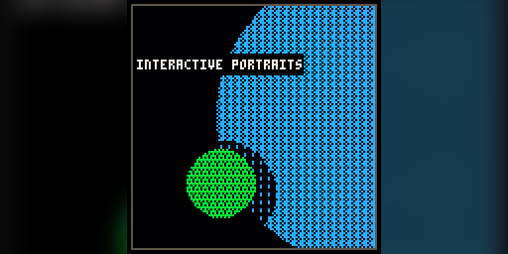Interactive Portraits: Trans People In Japan Mac OS
- Interactive Portraits: Trans People In Japan Mac Os X
- Interactive Portraits: Trans People In Japan Mac Os 11
- Interactive Portraits: Trans People In Japan Mac Os Download
A generation of artists and hackers have emerged on the internet using open source technologies for experiments in art and design.
Dear Twitpic Community - thank you for all the wonderful photos you have taken over the years. We have now placed Twitpic in an archived state. Get up to the minute entertainment news, celebrity interviews, celeb videos, photos, movies, TV, music news and pop culture on ABCNews.com. User-friendly software. BioTrace+ is the ultimate platform for biofeedback, neurofeedback, qEEG and physiological research.The software provides a user-friendly interface to.
CLOUDS is an interactive documentary and a portrait of this community of digital pioneers, explored through the lens of code. The project asks questions about the future of creativity at a time when algorithms play an important role in shaping culture.
People featured in the film include 40 artists, designers and hackers who participate in the co-creation of free tools for creative expression: Processing and openFrameworks. Reflecting the story of these online communities, the software behind CLOUDS was built in C++ using openFrameworks, and includes real-time interactive visualizations by the artists featured in the documentary.

In its revolutionary hybrid format, somewhere between a documentary, a videogame, and data visualization, CLOUDS allows viewers to navigate a web of ideas. It uses a data-driven Story Engine to present an endless ever-changing conversation, where artists co-exist with their code, presented through real-time interactive visual systems and lush 3D environments.
Interactive Portraits: Trans People In Japan Mac Os X
The project has been presented at prestigious film festivals and museum exhibitions as both an installation and a cinematic experience for a live audience. It’s now available as a software application for audiences at home to download and explore on their personal computers, OS X or PC, with the option of viewing in Oculus VR. The techniques explored in CLOUDS suggest a possible future of storytelling that brings interactive graphics, visual effects and cinema closer together.
In the mid 90s, John Maeda led the Aesthetics and Computation Group at the MIT Media Lab: a space for artists and designers experimenting with software. In 2001, Maeda’s students Casey Reas and Ben Fry built the foundations of Processing, a java toolkit for artists and designers creating work for the web. Over the next decade, Processing was widely adopted as a teaching tool in universities to introduce students to the art of creative coding, while gaining popularity among professional artists for designing interactive graphics and generative art. In 2005, a C++ language called openFrameworks was initiated by Zach Lieberman, Theo Watson and Arturo Castro. OF was inspired by Processing, while designed for faster real-time 3D graphics, and interactive installations using advanced computer vision. OF is now a popular tool for commercial interactive art and non-commercial projects alike. Both Processing and OF remain completely free and open relying on contributions and code addons from communities of individuals around the world who collaboratively build these software libraries using online repositories such as GitHub. As an international phenomenon, popular in North and South America, Japan and Europe, creative coding is broadly considered the first global art movement of the internet age.
Interactive Portraits: Trans People In Japan Mac Os 11
Independent non-profit labs, such as the Studio for Creative Inquiry at Carnegie Mellon, led by Golan Levin, and Eyebeam Art + Technology Center in New York, have supported the work of these open source communities, and supported this documentary.